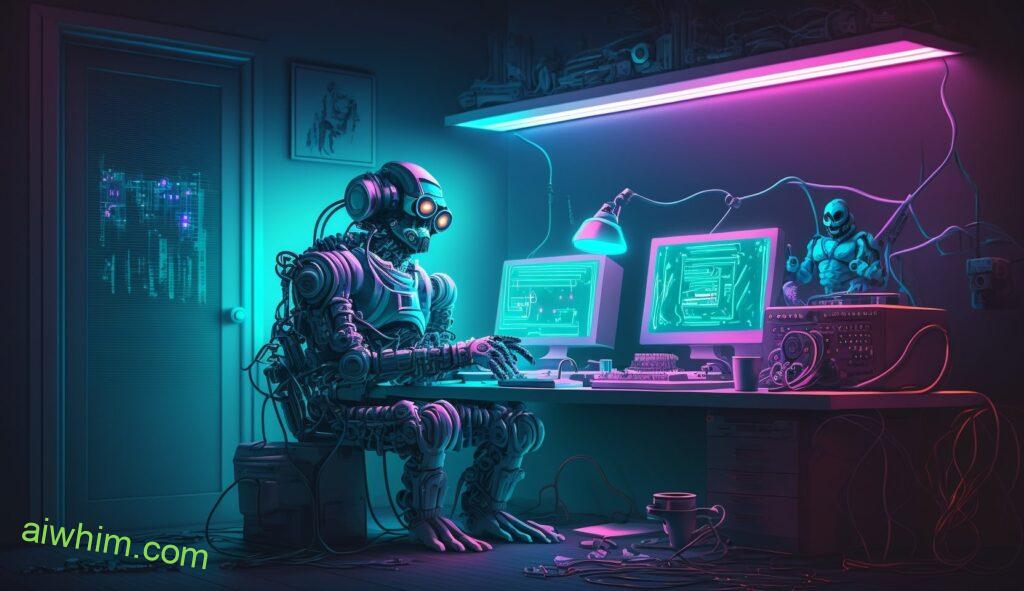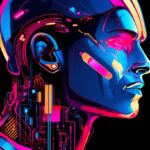As technology continues to evolve, many jobs are being replaced by automation. According to a recent survey conducted by the Pew Research Center, nearly half of all Americans believe that within fifty years robots and computers will do much of the work currently done by humans. This raises an important question – what does this mean for proofreaders and copy markers? Will their jobs be taken over by Artificial Intelligence (AI)? Is your career at risk?
In this article, we’ll take a closer look at how AI is impacting the roles of proofreaders and copy markers. We’ll explore how advances in machine learning have allowed machines to pick up some tasks traditionally performed by human workers. Finally, we’ll uncover several strategies professionals can use to ensure they remain competitive as automation accelerates.
By exploring these topics in detail, readers can gain insight into how AI may shape future job opportunities in the field while also formulating plans of action for staying ahead of the curve when it comes to their career paths. So if you’re interested in protecting your professional livelihood in an ever-evolving tech landscape, then keep reading!
Before we start, please read this article if you want to learn about how AI is changing the landscape for editors. Also I have an article that may be of interest about journalism in the AI-era, and one about how ChatGPT could impact the future of writing.

Definition Of AI
AI stands for “artificial intelligence,” and it refers to machines that can think and act independently. AI is a broad term used to describe technologies that allow computers to learn from data, recognize patterns, make decisions, solve problems, explain outcomes and automate tasks. AI has the potential to revolutionize many industries and replace certain jobs held by humans. This raises an important question: will proofreaders and copy markers be replaced by AI? Let’s explore this further.
The most common form of artificial intelligence today is Machine Learning (ML). ML involves giving computer systems access to large amounts of data so they can learn how to identify patterns in it. Once these patterns are identified, the system can then use them to predict future results or behavior with greater accuracy than a human might be able to do on their own. As such, ML could potentially provide more accurate feedback than manual proofreading or copy marking processes currently offer.
For instance, take Google Translate—an example of machine learning at work in action. It uses algorithms trained on millions of words translated between different languages in order to accurately translate text you type into its interface. With enough training data and optimized algorithms, there’s no limit as to what types of written content an AI-enabled program could help edit or review – making it possible for proofreaders and copy markers’ roles to eventually become obsolete over time.
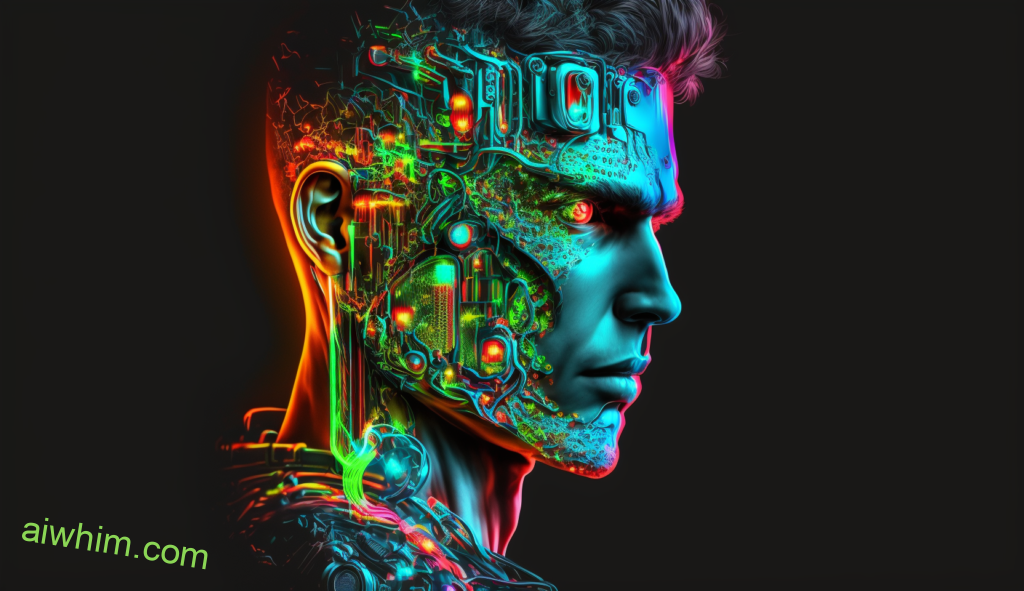
What Is A Proofreader And Copy Marker?
A proofreader and copy marker are the guardians of content. They help protect our written words from imperfections, ensuring that they read as clearly and accurately as possible. Like a lighthouse in a stormy sea of typos, grammar errors, punctuation missteps, and awkward phrasing; these professionals ensure accuracy for readers seeking clarity.
Proofreaders and copy markers possess an eagle eye for detail: noticing inconsistencies in spelling, verb tense or time sequence. They also have the ability to identify when something is missing – like a comma or quotation mark – which can improve comprehension overall. This attention to detail helps create polished pieces that reflect positively on their authors’ reputations while conveying meaning precisely.
By making sure everything reads correctly, proofreaders and copy markers offer us freedom from worry about small details so we can focus more fully on communicating effectively with our audience through compelling stories, ideas and information.
Advantages Of AI Over Human Proofreading And Copy Marking
The introduction of Artificial Intelligence (AI) into the field of proofreading and copy marking has been a major disruption in recent years. AI algorithms have become increasingly sophisticated, giving them an edge over humans when it comes to accuracy and speed. However, there are still many advantages that human proofreaders and copy markers possess over their automated counterparts.
One major advantage is that humans can always pick up on contextual cues which may be missed by an AI algorithm. For example, human proofreaders can determine if a sentence contains subtle nuances or other elements beyond spelling and grammar errors; this type of analysis simply cannot be replicated by machines. Additionally, since people are able to detect patterns more easily than computers, they tend to make fewer mistakes when dealing with large amounts of data.
Last but not least, certain tasks like making creative decisions require the input of a human brain. People often have unique insights that enable them to create something truly special – something no robot could ever replicate. Humans also bring empathy into the equation; while an AI algorithm might be good at detecting typos and misspellings, it won’t be able to provide emotional support for those who need help with writing projects. For these reasons alone, people will continue to remain valuable assets in the world of proofreading and copy marking for years to come.
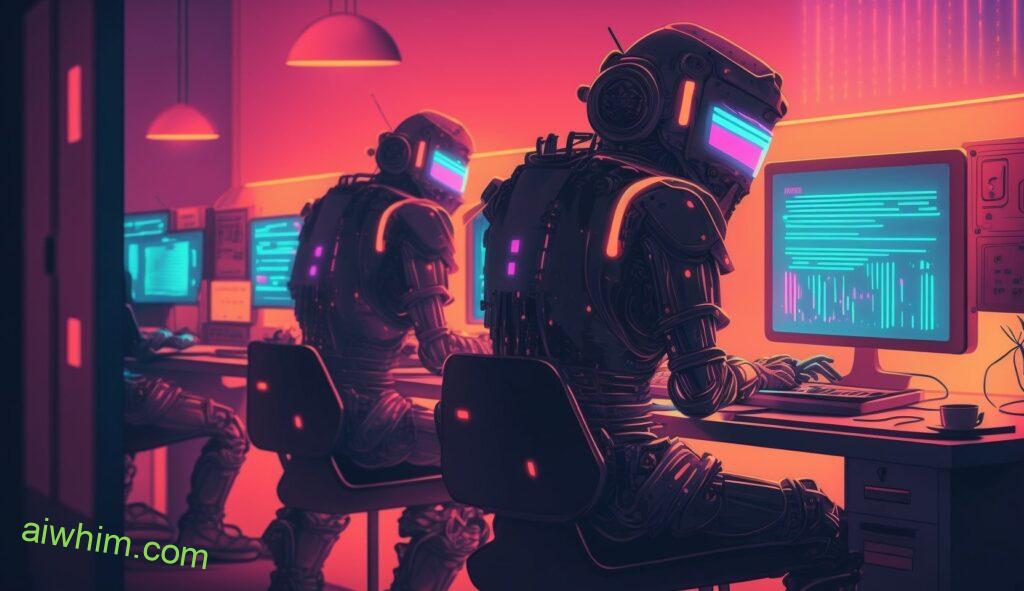
Disadvantages Of AI Over Human Proofreading And Copy Marking
While AI has the potential to revolutionize certain industries, it’s important to consider its limitations when applied to proofreading and copy marking. For one thing, AI lacks creativity and an eye for detail that humans possess – two aspects of these professions which are essential for accuracy and successful outcomes. Humans also have an innate understanding of context and meaning that cannot be replicated by artificial intelligence; something which makes them invaluable in reading critically or making subtle changes to documents which can make a huge difference in how they’re perceived.
Additionally, while computers may never get tired, they do not have the same level of dedication as human professionals. This means that mistakes are more likely if there is no skilled professional overseeing a job done by AI – regardless of how well programmed the technology might be. Furthermore, humans tend to work faster than AI in this arena due to their superior ability to spot errors quickly.
Finally, AI does not come without risks from a privacy standpoint. As businesses increasingly turn towards automation for tasks such as proofreading and copy marking, sensitive customer information will become vulnerable to exploitation by malicious actors who could use it against individuals or organizations with devastating results. Thus, using human professionals remains the safest option when dealing with confidential data – both now and into the future.
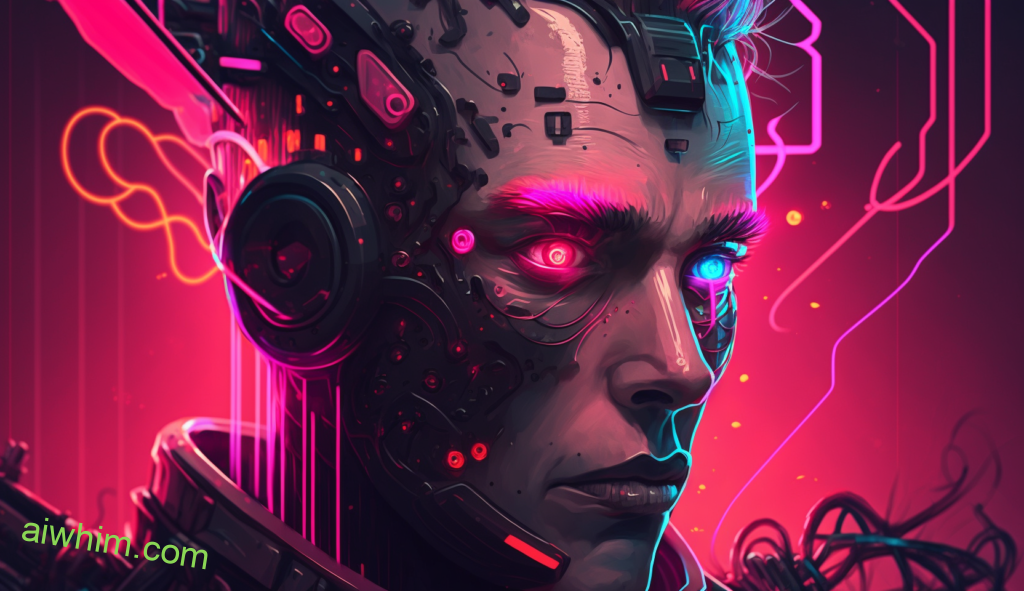
How AI Is Being Used To Replace Manual Work In The Industry
The use of AI to replace human proofreaders and copy markers is becoming increasingly commonplace in the industry. This has caused many professionals to worry about their job security, as technology advances at a rapid rate. Artificial intelligence (AI) holds an advantage over human labor when it comes to certain tasks due to its speed, accuracy, and scalability.
AI-driven algorithms are now being used for automated proofreading, copy marking, and other editing services. These programs can quickly scan documents for errors, typos, punctuation mistakes and more without fatiguing or making careless mistakes like humans may do. Additionally, they can be scaled up or down depending on the workload. They also save businesses time and money by not having to hire additional people to manage large volumes of work.
In addition to replacing manual labor with AI technologies, companies are also using machine learning algorithms that provide better insights into customer behavior than any person could achieve alone. With this data-driven approach, businesses have access to valuable information that allows them to make decisions faster and more accurately than ever before. By leveraging these tools, organizations are able to stay competitive in the rapidly changing markets we see today.

Impact Of AI On The Human Workforce
The rapid advancements in Artificial Intelligence (AI) have been creating a stir of anxiety and uncertainty amongst many professionals. AI’s growing capabilities are making even traditionally human-driven jobs obsolete, such as those of proofreaders and copy markers. With the fear that their career may be at risk due to this new technology, it is important for people to understand the impact of AI on the human workforce:
- AI can detect errors faster and more accurately than humans: AI algorithms are trained to identify patterns in large sets of data which help them spot mistakes quickly and accurately; something that would take a long time for an individual person to do manually. This could lead to greater efficiency in areas such as editing manuscripts or catching typos while proofreading documents.
- Automation reduces cost of labor: By automating tasks previously done by humans, companies will save money on salaries and other overhead costs associated with employing personnel. This could mean less job opportunities available if businesses decide to go down the automation route instead of hiring workers for manual tasks like proofreading.
- Many industries will benefit from automation: It’s not just editors who should be concerned about AI replacing their work; there are numerous professions where automation might bring improvements in quality, speed, accuracy and cost savings – including healthcare, finance, manufacturing, engineering and customer service departments.
- Humans still have skills that machines don’t possess: Despite all its advances in capability, AI still lacks certain qualities possessed by humans – namely creativity, intuition and social interaction skills which are essential when providing customer service or completing complex tasks requiring problem-solving abilities. Even though some aspects of work may become automated over time, we must remember that the unique talents that humans possess remain invaluable assets within any organization or industry sector!
Humans need not necessarily suffer from the rise of artificial intelligence but rather embrace it as a tool to enhance productivity across multiple industries. While there may be challenges along the way as technology continues to advance rapidly beyond what was once thought possible – ultimately it is up to us how we use these tools to make ourselves better at what we do best!
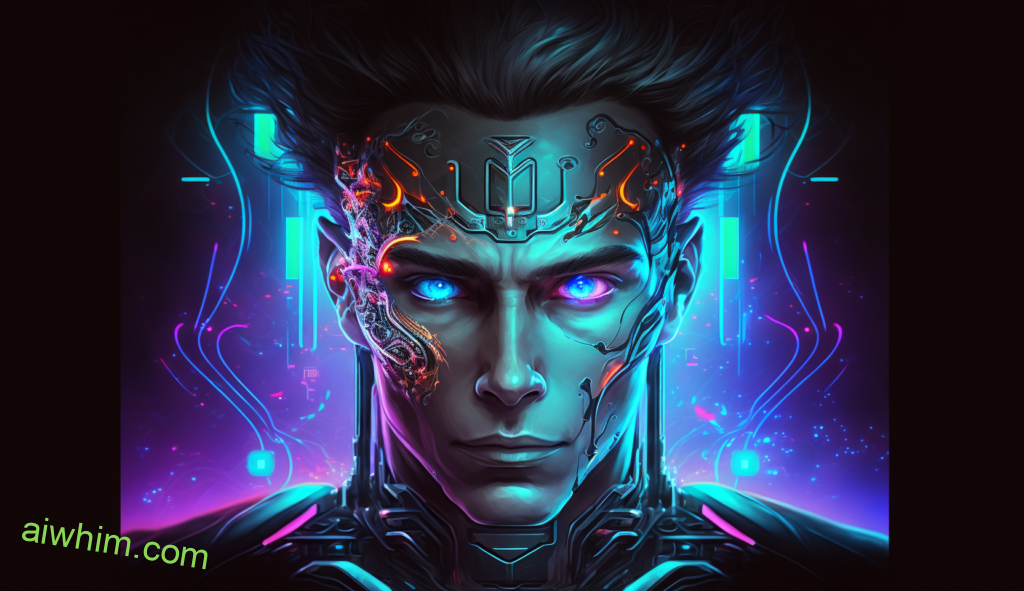
The Future Of Artificial Intelligence In The Field
The potential of artificial intelligence (AI) to replace jobs such as proofreaders and copy-markers is undeniable. AI can quickly scan written material, detect mistakes, and complete tasks faster than human workers. As a result, many are asking whether their job security could be at risk due to the advancement of technology.
It’s true that an increasing number of businesses have begun implementing automated processes in order to cut costs. However, there’s still much debate over how successful AI will be for certain roles. For example, some argue it may not have the capabilities to fully understand context or identify subtle nuances within language – skills which humans possess but machines lack. This could give people a competitive edge when applying for similar positions.
Overall, despite the rapid advances made in AI technology, it appears unlikely that proofreading and copy-marking jobs will become completely obsolete anytime soon. That being said, those looking to stay ahead should consider upskilling themselves with courses related to digital marketing or data analytics so they remain relevant and employable for future endeavors.

Opportunities For Other Careers Within The Industry
As you probably know, Artificial Intelligence (AI) has been making waves in the current job market. You may have heard rumors that proofreading and copy editing jobs are at risk of being replaced by AI. It’s true; your career could be on the line! But don’t panic just yet – there is still hope for those who wish to remain employed within this industry.
First off, let me assure you that AI can never replace a human touch when it comes to quality control. No matter how advanced technology becomes, mistakes will always slip through the cracks if someone isn’t actively looking out for them – something automated systems cannot do as well as humans can. Therefore, positions such as Proofreaders and Copy Editors will continue to exist even after AI integration into their respective fields.
Moreover, while AI might help streamline certain processes involved with these jobs, it also opens more opportunities for other positions within the same field rather than replacing existing ones altogether. For instance, some organizations now require an additional “Reviewer” role which involves manually verifying the accuracy of data generated by an automated system before finalizing any documents or projects. So yes, although automation may take away certain tasks from traditional roles within this industry, new avenues open up for others to explore instead – so why not make use of them?
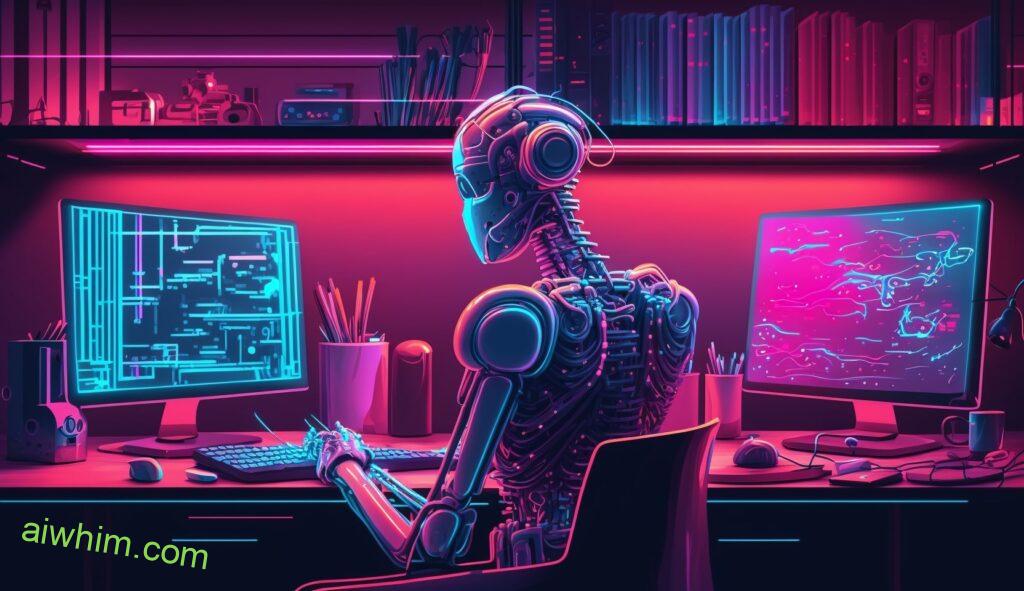
Training For Proofreaders and Copy Markers In New Technology
With the rise of artificial intelligence (AI) technology, many people have asked whether proofreading and copy marking jobs will soon become obsolete. Technology has always presented challenges to existing professions, but it also brings opportunities for professionals to adapt and grow in their careers. With the right training, professionals can not only stay ahead of changing trends in the industry; they can use AI as a tool to make their work easier while still providing quality services.
The first step is understanding how AI works and what type of tasks it’s capable of completing. Understanding this information can help people determine which tasks are best suited for an automated process and which ones should be done by a human. It’s important to remember that there are certain types of jobs that rely heavily on creativity or require complex problem-solving skills—jobs like proofreading and copy editing are usually too difficult for computers to do well. Professionals who focus on these kinds of tasks will likely remain employed even with increasing automation.
When looking at ways to train for new technologies, professionals should seek out courses or workshops that provide hands-on experience with AI tools and applications. Additionally, networking within the industry helps keep up with any changes related to AI usage so professionals know when they need additional resources or support from others in their field. Through continuing education and staying informed about advancements in the industry, experts can ensure they’re equipped with the knowledge needed to transition into more specialized roles using AI technology if necessary.
Training doesn’t just give individuals peace of mind; it allows them to reassert control over their career paths instead of leaving everything up in the air due to fear or uncertainty about job loss caused by technological advances. By taking proactive steps such as enrolling in classes or attending conferences focused on emerging industries, professionals will gain invaluable insights into current trends and how those may affect future employment opportunities. With continual learning and staying abreast of new developments, anyone working in fields related to proofreading and copy editing can rest easy knowing they’ll have access to secure long-term job prospects no matter what direction technology takes us next.
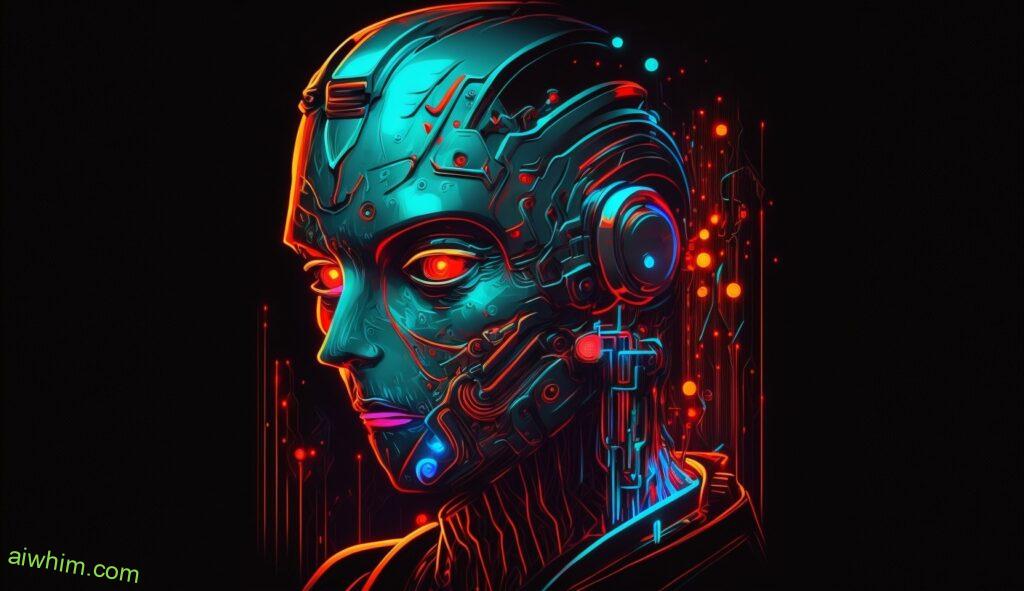
How Employers Are Moving Toward Automated Solutions
The writing industry is in an unprecedented period of change. As technology advances and artificial intelligence (AI) becomes more sophisticated, employers are increasingly turning to automated solutions for their proofreading and copy editing needs. This shift has left many professionals wondering: Is my career at risk?
As with any transition, there will be some disruption as the new paradigms take effect. However, instead of being a cause for alarm, this transformation should be seen as an opportunity – one that offers improved efficiency and accuracy while also freeing up human talent to focus on higher-value tasks. After all, why spend hours manually combing through documents when AI can do it faster and better?
It’s evident that automation is here to stay. With the right strategies in place, you can ensure your own success by embracing the benefits of machine learning while still taking advantage of your unique strengths as a human. In other words, don’t fear robotics; embrace them! By doing so, you’ll be well positioned to achieve long-term professional satisfaction even amidst technological changes.
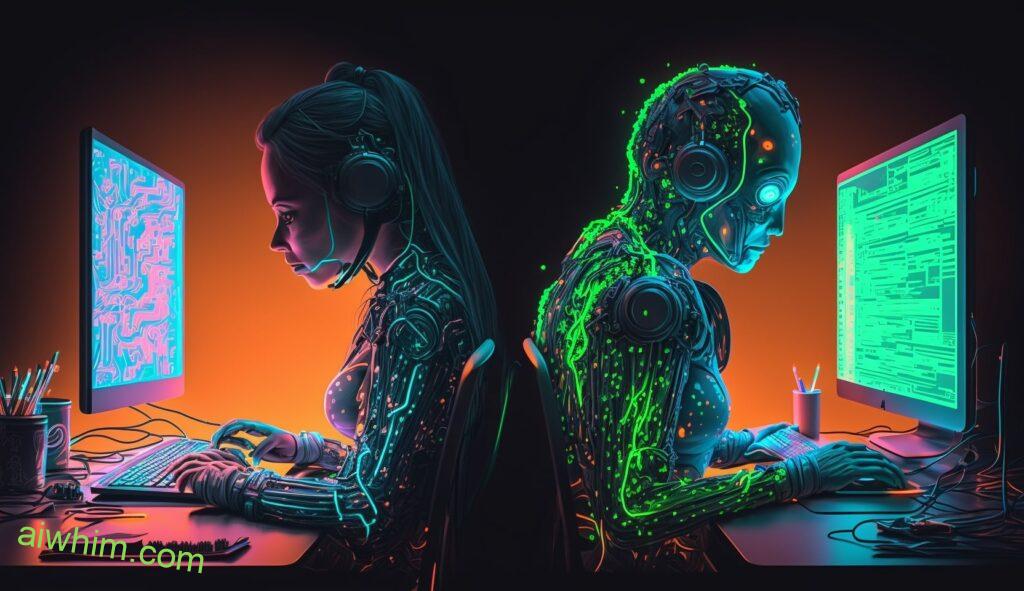
Strategies For Keeping Human Jobs Secure
As employers move toward automated solutions, it is natural to wonder if proofreaders and copy markers are at risk of losing their jobs. The answer is not so straightforward; while AI may replace some roles in the near future, there are strategies that can be used to ensure human jobs remain secure.
First and foremost, humans have a great advantage over machines when it comes to creativity and critical thinking. Machines lack the ability to think outside the box or interpret information with an open mind. This means that any job which requires creative problem solving – such as copy marking – will remain firmly in human hands for now.
In addition, technology-driven companies need people who understand both sides of the equation: tech and humanity. As automation advances, more positions will become available for those who know how to marry machine learning with customer experience. By staying ahead of trends and honing these skills, professionals can continue to serve as valued members of teams around the world.
Here are three key strategies for keeping your career secure amidst automation:
- Adapt quickly – Monitor changes in industry trends and stay up-to-date on new technologies related to your profession.
- Prioritize lifelong learning – Invest time into acquiring new knowledge and certifications or pursuing continuing education opportunities relevant to your field.
- Focus on relationships – Make sure you build strong relationships with colleagues, clients, partners etc., rather than relying solely on technology as a communication tool.
The bottom line is this: automation does pose certain risks but also brings about exciting opportunities for anyone willing to embrace change and take charge of their own professional development journey. It’s important to remember that regardless of technological advancement, no machine can ever fully replicate all aspects of what makes us human — our insightfulness, resilience and empathy towards others — traits which will always be invaluable within the workplace
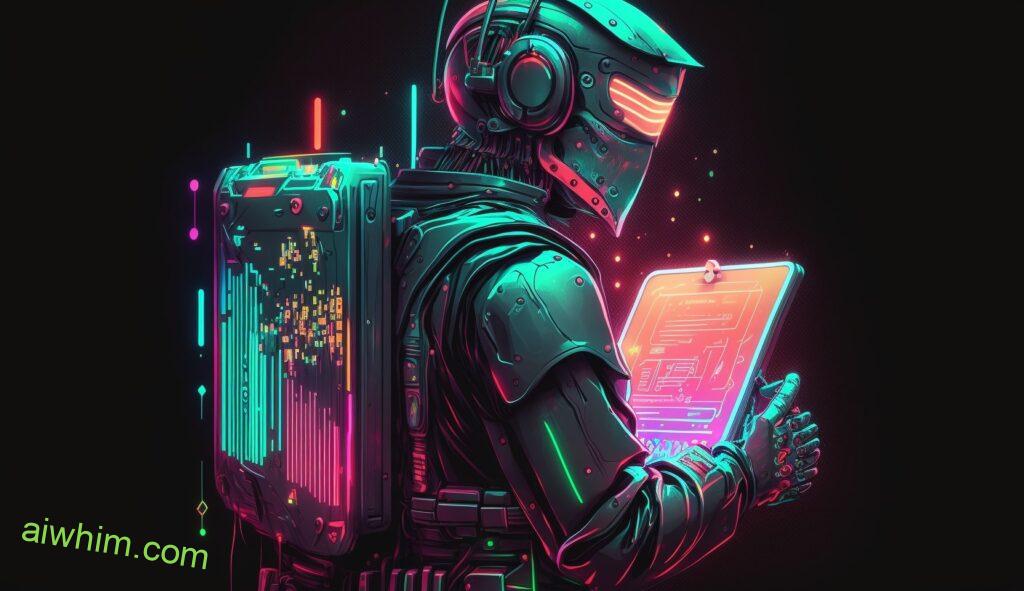
Steps Companies Can Take To Leverage Automation Responsibly
In the digital age, it’s no surprise that artificial intelligence (AI) is rapidly replacing traditional jobs such as proofreading and copymarking. But with this shift comes a responsibility for companies to ensure AI is used in an ethical way. Here are three steps companies can take to leverage automation responsibly.
First, organizations should embed considerations of social impact into their development process. This means considering who is affected by any potential changes they make—whether it be their customers or employees who may lose their job due to automation taking over certain tasks. It also requires engaging stakeholders from these various groups throughout the development process so that everybody has a say in how technology will shape the future of work.
Second, companies must provide adequate training and support for those transitioning out of roles subject to automation. This includes offering workers retraining programs to help them transition into other positions within the organization or find new employment outside the company altogether. Additionally, businesses must pay attention to the mental health implications associated with a changing workplace dynamic and offer resources accordingly.
Finally, organizations need to prioritize transparency when introducing automated technologies into existing processes. Companies should strive to keep employees informed about any potential changes along every step of the way while also providing access to clear documentation on how decisions were made and why certain choices were chosen over others. Doing so builds trust between employers and employees and ensures everyone feels included in decision-making around automation initiatives.
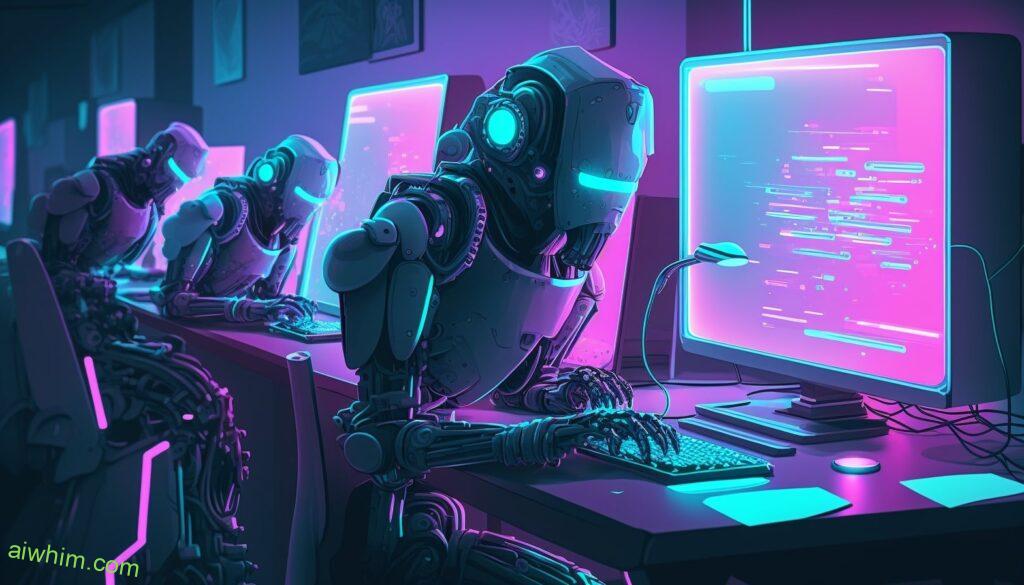
Pros Of An Integrated Approach To Automation And Human Labor
The idea of automation replacing human labor has been a topic of debate for decades, but it’s never been as relevant as today. As Artificial Intelligence continues to advance and become more accessible, many people are wondering if their jobs will be replaced by robots and computers in the near future. While there is no easy answer to this question, what can be said with certainty is that automation and human labor should not exist separately from one another. Instead, they should work together in an integrated approach which harnesses both strengths while mitigating weaknesses.
When considering integration between automation and humans, several key points come into play. For instance, machines often have better speed and accuracy when completing certain tasks; however, humans possess superior pattern recognition skills that allow them to spot errors or discrepancies quickly. Similarly, automated systems may be capable of performing complex calculations faster than any person could ever hope to do so; but in some cases their lack of creativity prevents them from offering creative solutions that would otherwise benefit a project or task. By combining the best aspects of both technologies through an integrated approach – such as strategies like machine learning – companies can create a system which offers great value without sacrificing efficiency or creativity.
As technology advances and more industries begin looking towards automated processes to increase productivity and reduce costs, it’s essential that businesses consider leveraging an integrated approach before making any major decisions regarding automation implementation. Such an approach allows them to take advantage of both automation’s precision and speed while tapping into the potential offered by human resources too. In addition to improving overall output quality and reducing operational expenses over time, integrating AI-driven systems with existing staff empowers employees while boosting morale throughout the organization – two very important benefits indeed!
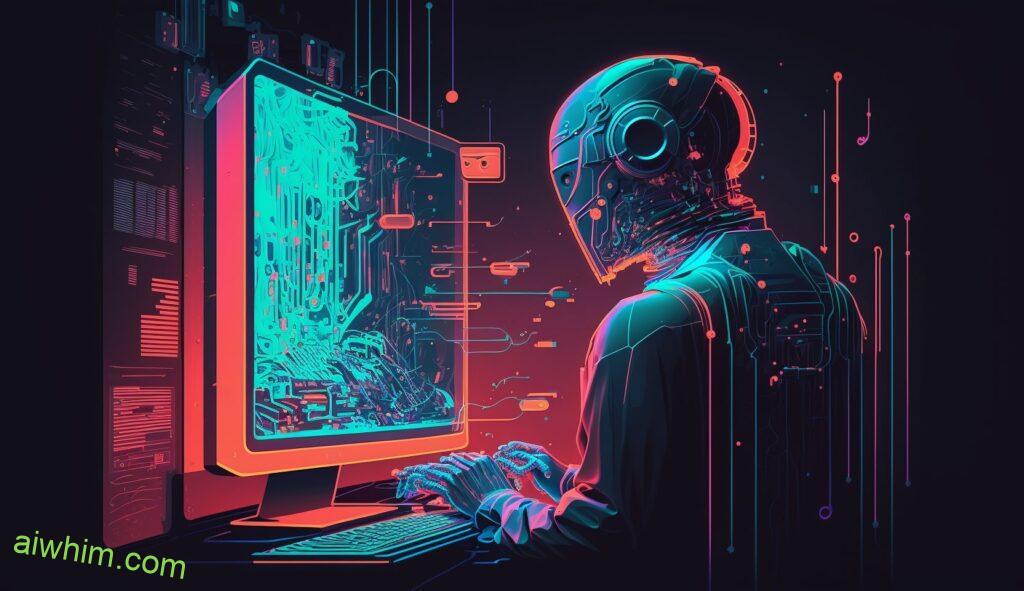
Ethical Issues Automating Proofreading and Copy Marking
The automation of tasks in professional environments raises important ethical considerations. For example, if a proofreader or copy marker’s job is replaced by AI, then they may lose their livelihood and the ability to support themselves financially. This could have long-term implications for those who rely on these jobs as a primary source of income, such as single parents or families living in poverty. Additionally, it could lead to an increase in unemployment among certain demographics and create further economic disparities.
Furthermore, automating processes also has social consequences that must be taken into account. When people are displaced from their work by technology, there can be a feeling of displacement within society. People may feel like their skills are no longer valued and might struggle with finding meaningful employment elsewhere. This can cause psychological distress and other mental health issues which need to be addressed too.
It is essential that companies take responsibility for any human costs associated with automated processes and ensure that workers affected are supported adequately throughout the process. Companies should strive to provide training opportunities so employees can develop new skills while still being gainfully employed to avoid any potential losses of income or financial hardship which could result from automation taking away traditional roles.

Potential Legal Implications Of Automating Jobs
Replacing proofreaders and copy markers with AI is like replacing a human heart with an electronic one; it may seem to do the job, but there are many difficult legal implications that come along with this decision. Automating jobs can create various issues for individuals whose work has been taken away from them. The primary issue lies in the fact that people who were previously employed in these positions now have no source of income, putting them at risk due to economic instability.
In addition, employers must be careful when hiring new employees after automating certain jobs. Without proper vetting procedures and clear guidelines on how they should hire new workers, companies may find themselves facing lawsuits if discrimination or negligence occurs during the process. Furthermore, laws protecting wage-earners’ rights will also need to be adjusted as automation takes over more roles within organizations.
The potential legal ramifications of automated labor means businesses must act responsibly when implementing such technologies into their operations. Companies must ensure they are providing fair wages and benefits to any remaining staff members while also taking steps to protect those affected by job losses through training programs or other forms of financial support. For those concerned about their career prospects, understanding the complex nature of automation is key to ensuring future employment security.

Conclusion
In conclusion, artificial intelligence (AI) is making its way into many industries and professions – including proofreading and copy marking. AI brings a lot of potential benefits in terms of cost-savings and efficiency; however, it can also pose risks to the livelihoods of workers who traditionally perform these tasks. Companies should carefully consider how they leverage automation responsibly to ensure that their actions are ethical and do not lead to any legal implications.
Symbolism can be used as an effective tool when integrating automation with human labor. It helps create imagery that can inspire people to take action or think differently about certain topics – such as responsible use of AI in the workplace. For instance, imagine a future where humans and machines collaborate together for mutual benefit, rather than one replacing the other. This image motivates us to strive for a more balanced approach between automated services and skilled human professionals.
At the end of the day, we all have a responsibility to ensure our use of technology does not come at detriment to anyone’s career prospects or well-being. As businesses continue to explore ways of leveraging automation while protecting jobs, I hope this article has provided you with useful insights on how best to achieve this balance!
Author: Ole Paulson
Author Bio: I’m Ole and on this website, I share everything there is to know about Artificial Intelligence, and useful tips for using AI to our advantage. I have a background in data science and research and have been following the AI-space for years. You can read more about me in the “About” page.

